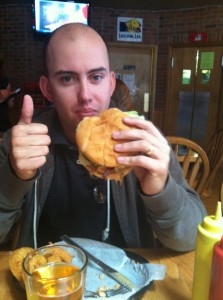A series of articles in today’s Australian newspapers – they still exist, because it’s 1978 here – contends that Australians were unwittingly fed donkey meat, goat and maggot-ridden offcuts by some of the country’s leading meat producers, according to newly revealed Royal Commission findings.
Papers presented to Justice Albert Edward Woodward in the 1980s and made public for the first time describe Hammond Wholesale and Retail Meats trimming off the dye legally required on pet food and selling it for human consumption as well as  wide-spread substitution of halal meat.
wide-spread substitution of halal meat.
“The flesh of donkeys, goats, kangaroos, buffaloes and horses, killed in the field and without regard to any consideration of hygiene…was used indiscriminately to produce food for human consumption,” the report said.
Some companies passed off kangaroo, horse and other pet-food only grade cuts as human-grade mince, while others sent low-quality scraps off to be used for dim sim fillings.
Meat rejected for export to the United States from Souery Pty Ltd, was described by a veterinary officer as “rubbish and floor sweeping” and “eligible for pet food only”, but was sold to unsuspecting buyers in Adelaide.
The cleanliness standards at one Katherine abattoir in the Northern Territory were also described as filthy with “maggots … very much in evidence.”
Justice Woodward said there was no doubt Melbourne meat supply company Steiger’s Meat Supply “purchased considerable quantities of pet food which was injected into the human food chain.”
He said the owners of the business then attempted to cover up the operations and committed perjury so the scale of the operation could not be accurately assessed, but he suggested the substituted meat was freely available in Victoria and much of the east coast of Australia.
The details of the scandal have only come to light as the result of the country’s longest-running freedom of information battle by Canberra Times Editor-at-large Jack Waterford. Waterford first requested the documents in December 1982 on the day the Freedom of Information Act came into existence. After the decades-long battle he was finally given access to “appendix h” of the 1980 Royal Commission into meat substitution last week.
In total Justice Albert Edward Woodward named 35 cases requiring further investigation and or criminal proceedings.
Some, but not all, of the companies were sanctioned and faced prosecution under the Trade Practices Act as the $100 penalty imposed under the Export Act did not offer any deterrent.
The documents also name another man who operated under an alias who purchased at least 85 tonnes of pet meat in one year and repackaged it as boneless beef.
“[The man] was buying kangaroo meat from Queensland and horse meat in Victoria, ostensibly for distributing to retail pet shops but was selling at least some of the pet  meat to dim sim manufacturers.”
meat to dim sim manufacturers.”
An owner of Hammond Wholesale & Retail Meats said he kept greyhounds and bought $160,000 of pet meat in 10 months, his purchases would have feed 3000 dogs and he admitted that about half of the meat he sold for human consumption was pet meat.
Justice Woodward also found that Jakes Meats Pty Ltd substituted buffalo-meat for export quality boneless beef or bull.
The documents also refer to previously unreported large scale substitution of halal meat.
The findings of the Royal Commission led to an overhaul of the Australian meat industry. This weeks release of “appendix h” comes more than 30 years after the main document was made available to the public. While many of the companies named faced sanctions and had export certification cancelled effectively closing down operations, some of the persons named in the appendix are still involved in the meat industry.
It started with an eagled-eyed food inspector in San Diego, California on July 27,1981 and almost destroyed the $1 billion a year beef export trade of Australia.
A vigilant food inspector became suspicious of three frozen blocks of imported Australian beef that looked “darker and stringier” than bona fide boneless beef should be.
Tests showed that this bogus “beef” from Australia was horse meat.
In the next few days more horse meat, and then some kangaroo meat, masquerading as Australian beef were found elsewhere in the United States.
By 15 August, the press in Australia and the United States had begun to probe and report on the “Meat Substitution Scandal” and the joke of ”skippy burgers” was born.
Jack Waterford himself writes he finally received the report he requested on December 2, 1982, 29 years, 11 months and about two weeks ago.
I’ve been harsh. It’s 1982.
